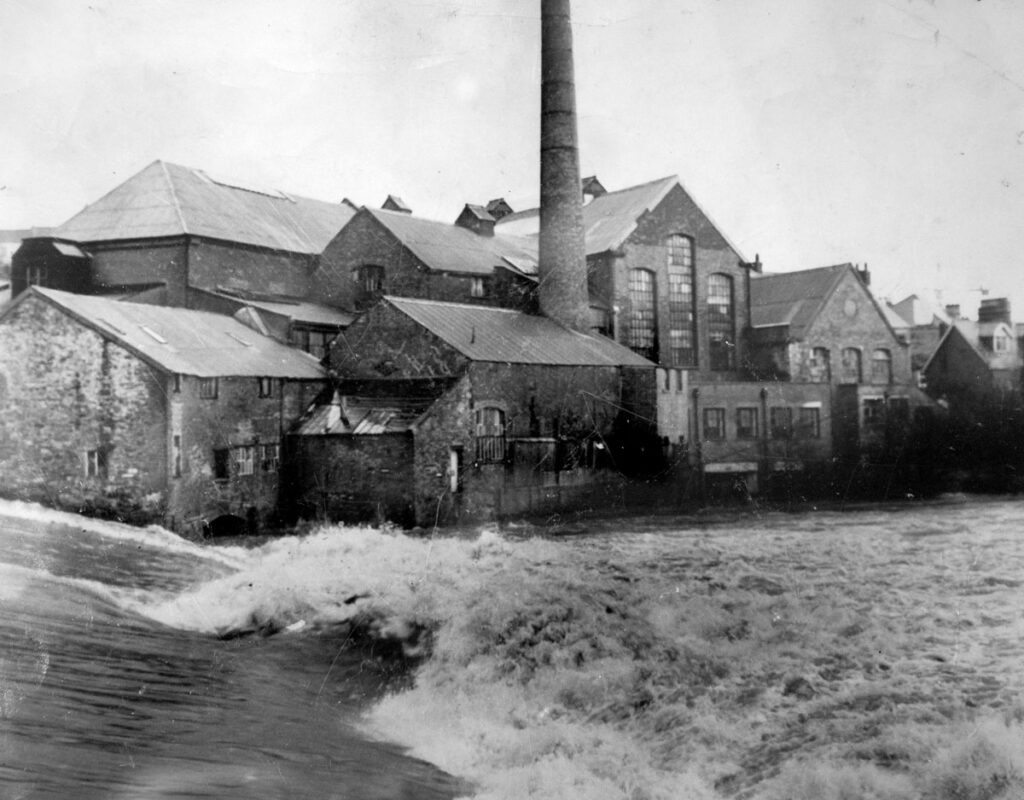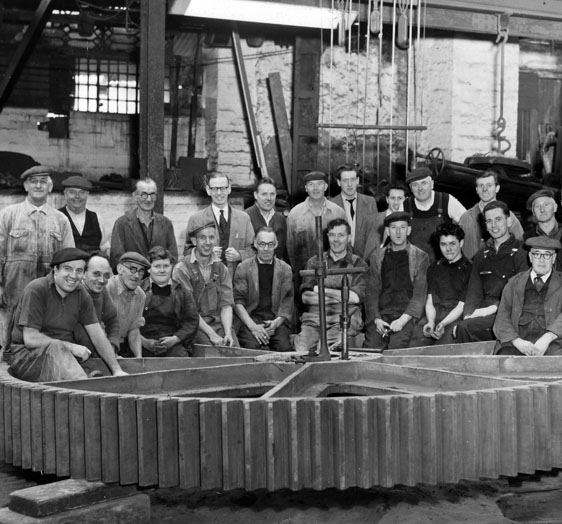Community researcher – Michele Shoebridge
The Mill on the Exe is situated on an important historical site adjacent to the river Exe, famous from the twelfth century for the mills that harnessed the power of the river to drive the wheels. It was the location for the first water plant that delivered fresh water to the citizens of Exeter.
It is popularly believed that the Mill on the Exe was a conversion of the Head Weir Mill. In fact, the mill site was bought by a builder, Seamus O’Reilly, and the mill was demolished in 1982 to make way for the new pub which opened in 1983.
The area around the Head and Blackaller weirs had been used for recreational swimming in the nineteenth century so the pub continued that tradition of recreational use. Hearsay has it that the planning process and building of the new pub did not always go smoothly! Proximity to the Exe, and having a leat running under the pub, had its drawbacks as it was often flooded.
The new flood relief scheme has helped, with the Cofferdam removed, the Mill Channel reinstated and then removable flood barriers installed in the pub garden in 2017.
The pub was bought by the St Austell brewery in 1994 who continue to enhance it and incorporated Head Weir House, the original mill house, to create a pub with rooms. The milling history continues to be reflected in the Millers Crossing footbridge which was built in 2002 and has a counterweight in the form of a mill wheel.
Leats or open watercourses and weirs were required to provide water for the mills. This area was serviced by the Higher leat and the Head and Blackaller Weirs. Although the leats have disappeared under roads or building developments, the weirs remain and the Blackaller Weir provides a great setting for the Mill on the Exe.
Exeter had a number of ‘grist’ mills grinding grain and later corn, malt, bone, snuff or driving bellows for leather tanning, dyeing etc. There was a fulling mill just below the Blackaller weir from the sixteenth century. Records show that in 1787 it was let for milling corn and in 1798 Edward Pim started making paper. By 1799 it was known as ‘Head Weir water paper mill’. A sale notice in the Exeter Flying Post in 1829 describes a large site but in 1882 the mill was damaged by fire. It was re-built in brick with a steam engine installed for when the River Exe’s flow was low. After the Great War the mill was acquired by E S & A Robinson, a Bristol paper, printing and packaging company. It produced 50 tons of paper per week for tickets, sugar paper and laminating before it closed in 1967.
Powhay was another group of mills further along Bonhay Road, (now Powhay Mills apartments), which operated until the early twentieth century.

